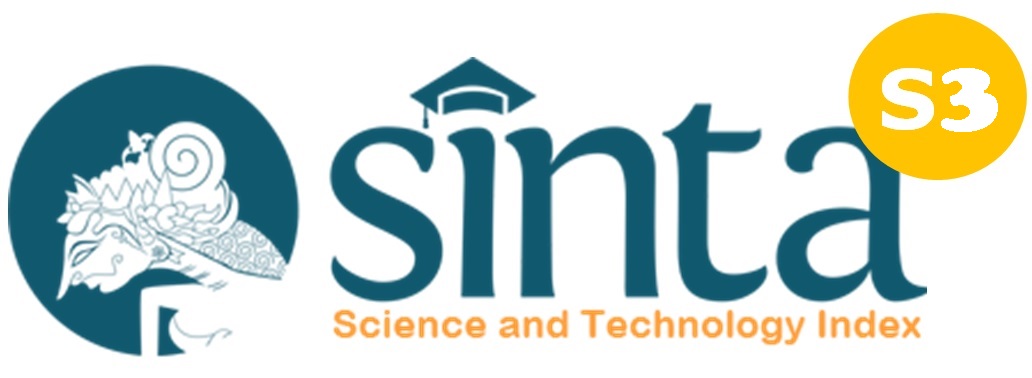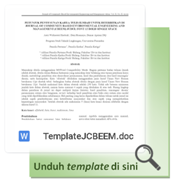Pollutant Load Capacity of Rawa Besar Lake, Depok, West Java
DOI:
https://doi.org/10.23969/jcbeem.v8i2.12742Keywords:
pollutant load capacity, pollution control efforts, Rawa Besar Lake, water qualityAbstract
Depok City has dozens of lakes and one of them is Lake Rawa Besar. The Depok government gives priority to Rawa Besar Lake to be development as a tourist destination. At this time the waters of Rawa Besar Lake are in a polluted condition caused by domestic waste, land use change, chicken farming and floating net caramba. The study aims to analyze water quality, determine the carrying capacity of pollutant loads and provide recommendations for pollutant load reduction. The calculation of the Pollution Load Capacity refers to Minister of Environment Regulation No. 28 of 2009. Based on water quality analysis, 5 parameters exceed the quality standard, such as BOD, COD, total phosphate, total nitrogen, and total coliform. Using the model and calculation of the pollutant load capacity of lake and/or reservoir. The pollutant load capacity of Lake Rawa Besar for BOD parameters is 50.26 kg/year while the existing load is 262.76 kg/year, COD is 418.81 kg/year existing load is 1150.41 kg/year, phosphate is 0.50 kg/year existing load 26.45 kg/year, nitrogen 12.56 kg/year existing load 85.88 kg/year and total coliform 8.4 x 104 amount/year existing load 9.6x106 amount/year. The burden of incoming pollutants exceeds the pollutant load capacity of Lake Rawa Besar. Pollution control efforts are carried out by implementing communal wastewater treatment systems such as an Anaerobic Baffled Reactor (ABR).
Downloads
References
Hendrawan, D. I., Fachrul, M. F., & Rinanti, A. (2020). The Lake As An Urban Ecological Balance In Depok City. International Journal of Scientific and Technology Research., 9(2), 339–343.
Lukiyansah, E., Tambunan, M. P., & Marko, K. (2020). Water quality index analysis of Lake Rawa Besar, Depok, West Java, and its relationship with land use. In International Coference on Earth and Environmental Science (Vol. 561).
Liyanage, C. P., & Yamada, K. (2017). Impact of population growth on the water quality of natural water bodies. Sustainability, 9(8), 1405.
Mazón, M. J., Piedecausa, M. A., Hernández, M. D., & García, B. G. (2007). Evaluation of environmental nitrogen and phosphorus contributions as a result of intensive growing of common octopus (Octopus vulgaris). Aquaculture, 266(1-4), 226-235
Murdoch, P. S., Baron, J. S., & Miller, T. L. (2000). Potential effects of climate change on surface‐water quality in North America 1. JAWRA Journal of the American Water Resources Association, 36(2), 347-366
[PerMen LH] Peraturan Menteri Lingkungan
Hidup No 28 Tahun 2009 Tentang Daya Tampung Beban Pencemar Air Danau dan Waduk
[PP] Peraturan Pemerintah Republik Indonesia Nomor 22 Tahun 2021 Tentang Penyelenggaraan Perlindungan dan Pengelolaan Lingkungan Hidup
Peters, N. E., & Meybeck, M. (2000). Water quality degradation effects on freshwater availability: impacts of human activities. Water International, 25(2), 185-193.
Pratama, A. (2016). Perencanaan Lanskap Konservasi Kawasan Situ Rawa Besar Kota Depok. Skripsi Sarjana Pertanian Departemen Arsitektur Lanskap Fakultas Pertanian, Institut Pertanian Bogor, Bogor.
Pratiwi, N. T., Hariyadi, S., Bagoes Soegesty, N., & Yuni Wulandari, D. (2020). Penentuan Status Trofik Melalui Beberapa Pendekatan (Studi Kasus: Waduk Cirata) [Trophic Status Determination Based on Several Approaches (Case Study: Cirata Reservoir)]. Jurnal Biologi Indonesia, 16(1), 89–98.
Price, C.S. and J.A. Morris, Jr. (2013). Marine Cage Culture and the Environment: Twenty-first Century Science Informing a Sustainable Industry. NOAA Technical Memorandum NOS NCCOS 164. 158 pp
Saragi, P.A. (2020). Strategi Perbaikan Kualitas Perairan Situ: Studi kasus Di Situ Rawa Besar, Kampung Lio, Kecamatan Pancoran Mas, Depok. Thesis. Universitas Indonesia.
Setiawati, R. (2019). Program Revitalisasi Situ Rawa Besar Sebagai Daya Tarik Wisata Air di Kota Depok. Jurnal Sosial Humaniora Terapan, 2(1), 70-84
Syandri, H., Azrita, A., & Mardiah, A. (2020). Water quality status and pollution waste load from floating net cages at Maninjau Lake, West Sumatera Indonesia. In IOP Conference Series: Earth and Environmental Science (Vol. 430, No. 1, p. 012031). IOP Publishing.
Hastuti, E., Nuraeni. R, & Darwati. S. (2017). Pengembangan Proses pada Sistem Anaerobic Baffled Reactor untuk Memenuhi Baku Mutu Air Limbah Domestik. Jurnal Permukiman, 12(2), 70-79.
Reddy, M.T., N. Sivaraj, V. Kamala, SR. Pandravada, N. Sunil, & N. Dikshit. (2018). Classification, characterization and comparasion of aquatic ecosystem in the landscape of Adilabad District, Telangana, Deccan Region, India. Access Library Journal, 5: 1-111
Sasse, L. 1998. Handbook of Decentralized Wastewater Treatment in Developing Country. Jakarta.
Tallar, R. Y., & Suen, J. P. (2015). Identification of waterbody status in Indonesia by using predictive index assessment tool. International Soil and Water Conservation Research, 3(3), 224-238.
Tambunan, M. P., Marko, K., Saraswati, R., Rokhmatuloh, & Hernina, R. (2021). A preliminary study of the physico-chemical parameters and potential pollutant sources in Urban Lake Rawa Besar, Depok, Indonesia. Indonesian Journal of Geography, 53(2), 236–244. https://doi.org/10.22146/IJG.60420
Tambunan, M. P., Marko, K., Saraswati, R., Rokhmatuloh, Hernina, R., & 1. (2018). Spatial Distribution of Sediment and Nutrient Loads in Urban Lake Rawa Besar, Depok, West Java, Indonesia. Preprints, 1–12
Tziortzioti, C., Amaxilatis, D., Mavrommati, I., & Chatzigiannakis, I. (2019). IoT sensors in sea water environment: Ahoy! Experiences from a short summer trial. Electronic Notes in Theoretical Computer Science, 343, 117-130.
Zhang, X., Chen, P., Dai, S., & Han, Y. (2022). Analysis of non-point source nitrogen pollution in watersheds based on SWAT model. Ecological Indicators, 138, 10888.














